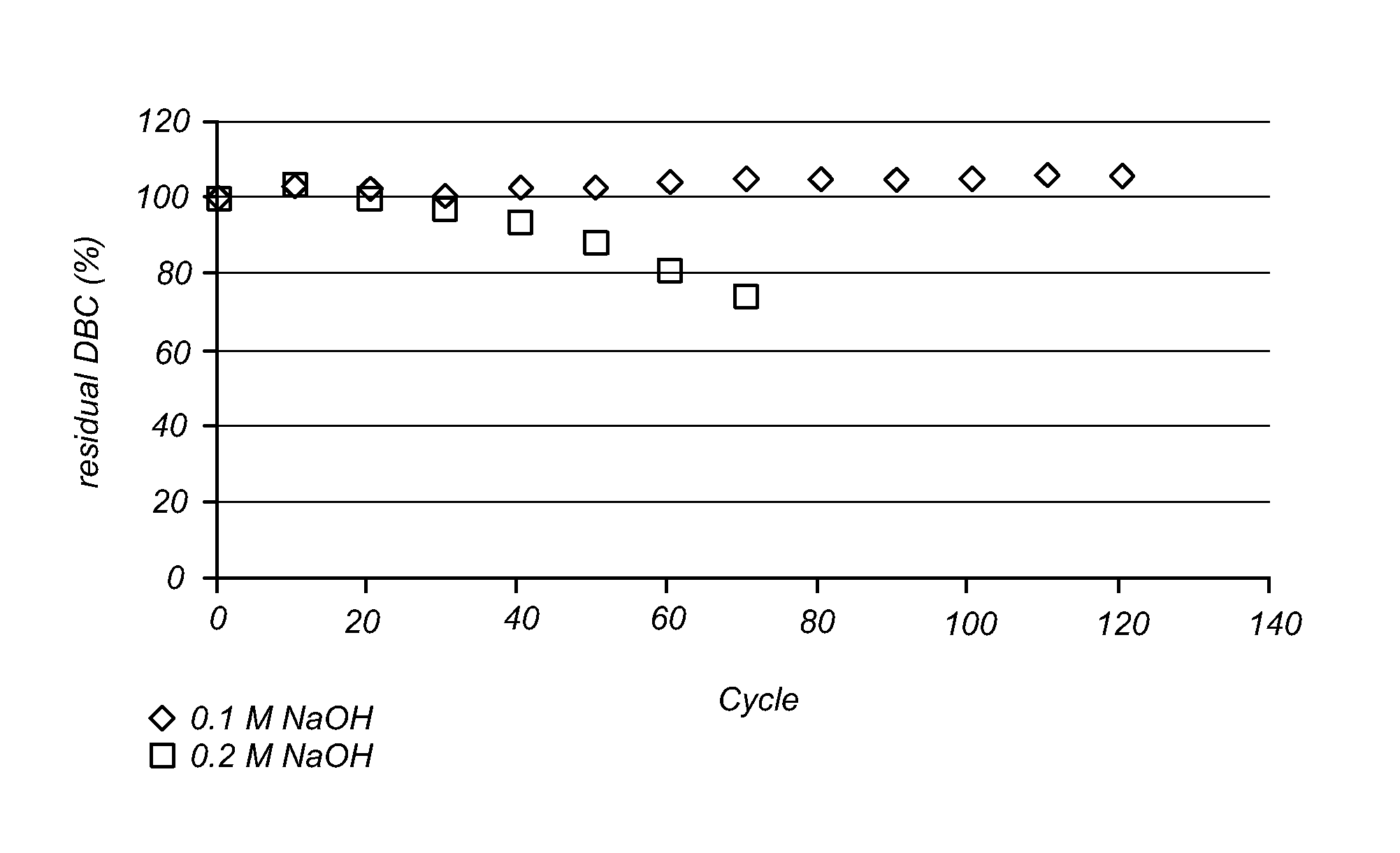Single-domain antigen-binding proteins that bind mammalian IgG
a single-domain, antigen-binding technology, applied in the field of biochemistry, can solve the problems of high purity, lack of consistency, and more and more critical and costly problems
- Summary
- Abstract
- Description
- Claims
- Application Information
AI Technical Summary
Benefits of technology
Problems solved by technology
Method used
Image
Examples
example 1
Identification of IgG-Fc Domain Binding VHH Fragments
[0065]The IgG-Fc domain binding VHH fragments were identified from llamas immunized with mammalian IgG antibodies and / or Fc fragments thereof. Screening of individual VHH fragments was performed by ELISA using IgG from different mammalian species and / or Fc—and Fab fragments thereof, including non-IgG antibodies like IgM and IgA, which resulted in a panel of VHH fragments binding to the Fc domain of mammalian IgG and human IgG in particular. Table 5 presents the CDR1, CDR2 and CDR3 amino acid sequences that are comprised in each of the VHH fragments and also the amino acid sequence of each of the VHH fragments including the framework regions.
[0066]
TABLE 5CDR1, CDR2 and CDR3 amino acid sequences in each of the clones and theamino acid sequence of each clone including the framework regions (FR)VHHCDR1CDR2CDR3VHH fragment including FRIgG-Fc-01SEQ ID NO: 1SEQ ID NO: 50SEQ ID NO: 99SEQ ID NO: 148IgG-Fc-02SEQ ID NO: 2SEQ ID NO: 51SEQ ID ...
example 1.1
Production of IgG-Fc Domain Binding VHH Fragments
[0067]The IgG-binding proteins of the invention were produced in yeast using strains and expression-constructs as described by van de Laar, et al., (2007, Biotechnology and Bioengineering, Vol. 96, No. 3: 483-494). Production of IgG-binding proteins was performed in standard bioreactors with a working volume of between 10 and 10,000 liters. Dissolved oxygen (Ingold DO2 electrode, Mettler-Toledo) was controlled by automatic adjustment of the impeller speed. The pH (Mettler-Toledo Inpro 3100 gel electrode or Broadley James F635 gel electrode) was controlled using phosphoric acid and ammoniac gas or ammonia solution. Foaming was detected by a foam level sensor (Thermo Russell) and controlled by 5-10% Struktol J673 addition. Temperature (PT100 electrode) was controlled via a cooling jacket and heating jacket. The offgas (Prima 600 mass spectrophotometer, VG gas analysis systems) analysed the ethanol concentration, rO2 and rCO2. Adding 3%-...
example 1.2
Expression Levels of IgG-Fc Domain Binding VHH Fragments in Fermentation
[0069]Expression levels of IgG-Fc binding VHH fragments in ethanol fed fermentations as described in example 1.1 were determined using a quantitative HPLC assay based on affinity chromatography columns. Samples were loaded onto an IgG coupled affinity column. After washout of unbound sample, bound IgG-Fc VHH fragment was eluted at low pH. The area of the eluted peak was determined by peak integration. Based on this peak area, the VHH fragment concentration in a sample was calculated using a standard curve.
[0070]End of Fermentation (EoF) samples at different fermentation volumes were analyzed on VHH fragment expression. An overview of VHH fragment expression levels at different fermentation volumes is presented in Table 6.
[0071]
TABLE 6Overview VHH fragment expression levels atdifferent fermentation volumesProductionVHH fragmentBatch idFermentation volume(g / l)*IgG-Fc-120602410m31.1320602510m31.18IgG-Fc-10204005200...
PUM
| Property | Measurement | Unit |
|---|---|---|
| dissociation constant | aaaaa | aaaaa |
| ionic strength | aaaaa | aaaaa |
| ionic strength | aaaaa | aaaaa |
Abstract
Description
Claims
Application Information
 Login to View More
Login to View More - R&D
- Intellectual Property
- Life Sciences
- Materials
- Tech Scout
- Unparalleled Data Quality
- Higher Quality Content
- 60% Fewer Hallucinations
Browse by: Latest US Patents, China's latest patents, Technical Efficacy Thesaurus, Application Domain, Technology Topic, Popular Technical Reports.
© 2025 PatSnap. All rights reserved.Legal|Privacy policy|Modern Slavery Act Transparency Statement|Sitemap|About US| Contact US: help@patsnap.com

